This week’s debate is not as acrimonious as in the past (although there are exceptions to that, of course), and in the wake of the biz models released by the Aspen conference, some people are taking building new revenue streams seriously. At least, they say they are. It turns out that a lot of what has been reported in this paid content debate is a little like Microsoft software releases: trial balloon “vaporware.”
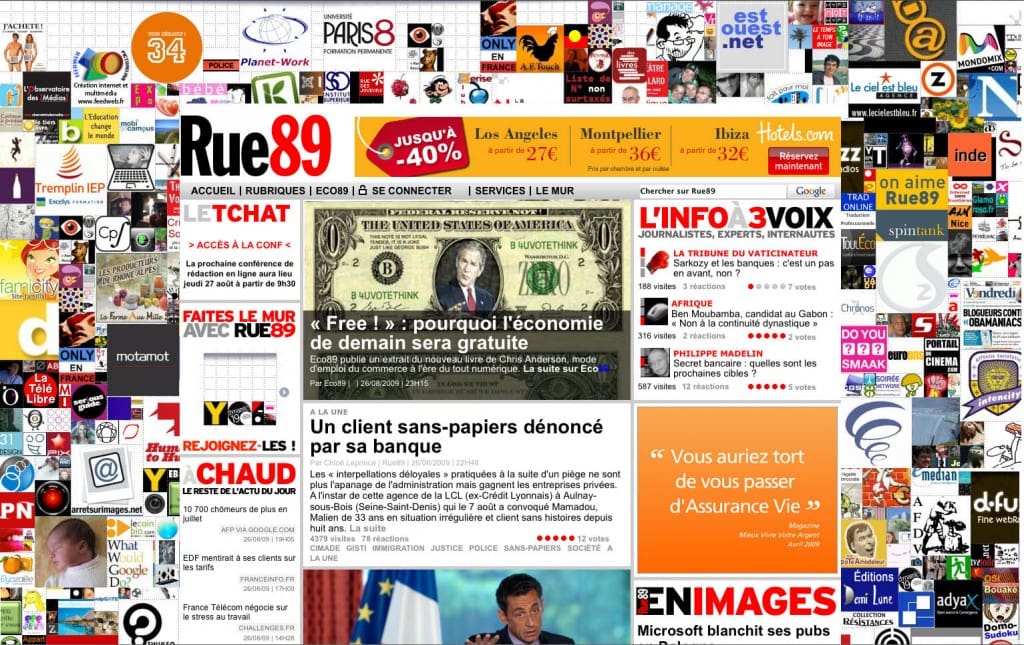
Page design at Rue89.com looks a little like what splatters on the side of the carny Tilt-a-Whirl after you load it up with a buncha 10-years olds who've spent the day eating cotton candy and mystery meat hotdogs. I think the boxes up & down the sides are supposed to be clickable ads, but they were inert when I tried them... (click for larger)
The illustration here is of a new French news site that is apparently taking off at Rue89; I can’t decide whether the chaotic design is totally off-putting, or intriguing because it basically violates every rule of page design. Also, I can’t hear the word “Rue” in a title without flashing to “Murders in the Rue Morgue.” Or some B-movie villain twirling a moustache and chortling, “You’ll rue the day, Rex Manly!”
As a bonus, this week I’ve broadened the focus a bit to include some big-picture thinking from some of the unusual suspects; Doc Searls has a post wherein it is posited that what we think of right now as the internet is just a finger pointing in the direction of what this thing is actually going to grow into. Which should fuel a couple of late-night dorm-room debates, if nothing else…
Jeff Jarvis comes out in favor of doing the exact opposite of erecting paywalls, and dubs it “Hyperdistribution” http://www.buzzmachine.com/2009/08/25/hyperdistribution/ In a nutshell, it’s the idea that news organizations have to splash their content all over the web to try to make up for the lower ad rates by compensating with larger audiences. Nut graf: “I have stood in and before no end of conferences when I or someone else recalls what that student said in The New York Times said a year ago: “If the news is that important, it will find me.” Waiting for her to come to our site won’t work – and it especially won’t work if, once a peer links her to our site, she finds a wall. No, we have to take news to her.”
PaidContent.org says that “The Future of News is Scarcity” http://paidcontent.org/article/419-the-future-of-news-is-scarcity/ and that the mistake newspapers are making is that they are focusing on
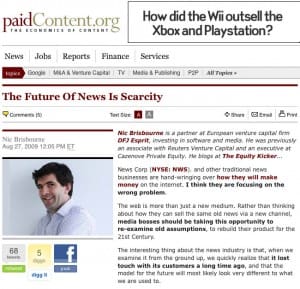
A new take on the "trust/verification" function of news organizations.
the wrong problem. Instead of trying to come up with ways to preserve the content model that has worn out, he says that “every abundance creates new scarcities and this is where the news industry must go to make money in the 21st century. The scarcities created (and enabled) by abundant news are interesting stories, thought provoking analysis, conversation and community, and trust/verification. (snip) The successful news company of the future will have to take all this on board and deliver it with a radically lower cost base than this industry is used to.”
From the BBC, an article about what the music industry can teach television (and perhaps newspapers) about fighting with the internet: http://www.bbc.co.uk/blogs/technology/2009/08/what_can_music_teach_telly.html Sample thoughts of what lessons to draw from the fight the RIAA has waged against its users: “Music biz teach TV? Greed, backwards thinking and lack of respect for the end consumer.” And “How to alienate its customers by treating them all as likely criminals.” One of the links will take you to this page, laying out the numbers of piracy of popular TV and movies: http://news.bbc.co.uk/2/hi/technology/8224869.stm
Over at Media Bullseye, they reference Star Trek villains, in a piece entitled “The News Aggregator-Borg: Resistance is Futile”
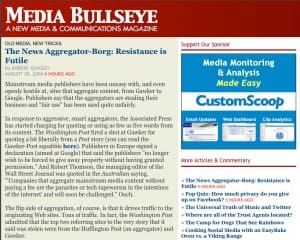
Does this mean Arianna Huffington is going to start sporting external cyborg prosthetics? 'Cause that'd be cool...
http://mediabullseye.com/mb/2009/08/the-news-aggregator-borg-resis.html The author, Robert Quigley, is the social media editor for the Austin American-Statesman, and is considered one of the smarter New Media thinkers around. Â He says that journalists should take the “if you can’t beat ’em, join ’em” approach to aggregating content in & around the web, pointing to the success CNN had in covering the attacks in Mumbai and unrest in Iran as examples of using the power of aggregation to shape & expand coverage.
Y Combinator, the startup incubator that has a heavy-duty track record, is calling out for business models to pave the way to “the Future of Journalism”: http://ycombinator.com/rfs1.html Y Combinator has a strong history of funding companies like Reddit, Omnisio and Zenter, and they are looking to dump money on anyone who thinks they have a realistic business model to support news production. The RFS (“Request for Startups”) is being issued because, according to them, ” Newspapers and magazines are in trouble. We think they will mostly die, because we think we know what will replace them, and it is too far from their current model for them to reach it in time. ”
Many people have pointed to the success of Amazon’s Kindle as proof that the future of news & newspapers lies in e-reader and portable devices like that. However, just as many people point out that Amazon demands 70% of the subscription revenues, which is spurring a lot of competitors. Slate magazine has an article about how to compete with the Kindle http://slate.com/id/2226503 Basically, just look at what all the would-be competitors to the iPod did – and do the exact opposite. Key point: “The service matters more than the device itself. Every time I dismiss the Zune, Creative Zen, or some other MP3 player as an also-ran, I get letters from loyalists who insist that their gizmo far outshines the iPod. Sometimes they’re right-but what they miss is that the iPod isn’t a standalone device. It’s part of a music-delivery ecosystem, the most important feature of which is iTunes.” Basically, the article lays out what publishers will have to do if they really want to deliver content to e-readers and make a profit.
In that vein, Editor & Publisher asks “Will E-readers Help Save Newspapers?” http://www.editorandpublisher.com/eandp/news/article_display.jsp?vnu_content_id=1004007001 It appears that the
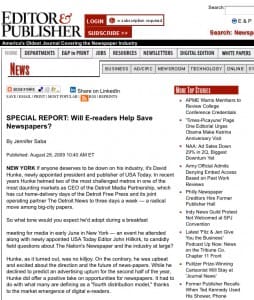
I tried to look at this on the Kindle. Not so good.
USA Today is hanging a great deal of hope on e-readers, along with a lot of other leading publishers. Nut grafs: “What’s interesting about e-readers is that they will most likely resemble the best aspects of print. The missing link, however, is the advertising model. (snip) Without advertising, newspapers stand very little chance of making any meaningful revenue from the e-reader platform.” The article goes on at length to address many of the technological, social and business obstacles standing in the way of just eliminating the costs of paper distribution in favor of sending Quark page layouts to a Kindle-like device.  Oh yeah – and here’s a link to the announcement of the Sony device http://www.publishersweekly.com/article/CA6685746.html
At the Knight Digital Media Center, the possibility of establishing “membership options” to charge for news is dissected: http://www.knightdigitalmediacenter.org/leadership_blog/comments/rather_than_a_pay_wall_consider_membership_options/ This borrowed somewhat from Mark Cuban’s suggestions (covered last week) to build a “News Junkie” membership which offers multiple services. The ASNE chat that this comes out of is located here http://208.88.72.149/tabid/122/Default.aspx (you do need to be a member or paid subscriber to see this – and yes, I recognize the irony inherent in all that).
Speaking of Cuban, he’s off on another unlikely crusade – this week, he’s decided that the internet has been “dead and boring for a while now,” and that two new technologies WebHooks or PubSubHubBub are going to CHANGE EVERYTHING!!!! (emphasis his) http://blogmaverick.com/2009/08/25/the-internet-is-about-to-change/ If you can get past the jargon (i.e. “Cloud-based distribution hub”), there might be something there. I’d be interested to see if he’s got any money invested in these, he’s banging the drum so hard. To me, it sounds like just another variation on “push”

Why do these wireframes look like the Tinkertoy stuff I made when I was 6?
technology, where a publisher crams information down the pipe to subscribers before it makes it available on the website. Me? I prefer the AP news alerts I’ve set up on my iPhone. For free. If you’re interested, Impact Media has a slightly more measured description of PubSubHubbub http://www.impactmedialtd.co.uk/blog/internet-news/what-is-pubsubhubbub/
If you’ve got the time for a “think piece” about what the long-term solutions to the revenue problems faced by companies trying to migrate their analog businesses to a digital platform, check out Doc Searls (one of the authors of “The Cluetrain Manifesto”) in “Thinking outside the Internet box” http://blogs.law.harvard.edu/doc/2009/08/28/thinking-outside-the-internet-box/ Here’s the Keanu Reeves “Whoah!” moment: “I’ve written often about how hard it is to frame our understanding of the Net. Now I’m beginning to think we should admit that the Internet itself, as concept, is too limiting, and not much less antique than telecom or “power grid “The Internet” is not a thing. It’s a finger pointing in the direction of a thing that isn’t. It is the name we give to the sense of place we get when we go “on” a mesh of unseen connections to interact with other entitites.”
Another “deep thought” piece comes from Fast Company, setting out “Three Possible Economic Models” for the digital future: http://www.fastcompany.com/blog/jamais-cascio/open-future/three-possible-economic-models-part-ii This is not directly related to the paid content debate, but it’s some interesting thinking on what kinds of companies are going to be viable in 10 years or so.
A piece on MinnPost talks about how the Journalism Online project launched by Steve Brill to such fanfare, perhaps … overstated … the number of newspapers that have signed on. http://www.minnpost.com/braublog/2009/08/19/10972/star_tribune_not_part_of_online_fee_venture Apparently, the Star-Tribune and Pioneer-Press have not, in fact, signed up.
This is a post from last week that I’ve just gotten around to including – Alan Mutter writes “Why aren’t we paying for news?” http://newsosaur.blogspot.com/2009/08/why-arent-we-paying-for-news.html Be sure the check out the comments section – there are notes there from some papers that recently either went behind, or emerged from paywalls. In the article, Mutter blames fear of change as the reason that everyone is talking about paid content, but very few people are actually doing it – yet. “Publishers can’t figure out how to charge for content without throttling their web traffic and the online advertising that comes along with it. (snip) Individual publishers are afraid to move unilaterally to begin charging for content but also unable to coalesce as a group around a common philosophy and platform for doing so.” Part 2 of Mutter’s epic trilogy is here: http://newsosaur.blogspot.com/2009/08/what-stops-publishers-from-charging-for.html And he winds it all up with: http://newsosaur.blogspot.com/2009/08/how-publishers-can-make-web-content-pay.html
Journalism.co.uk takes on the issue of free vs. paid content by stating that “Free is just another cover price” http://blogs.journalism.co.uk/editors/2009/08/

In the little time I've spent here, I actually quite like this scrappy little paper. Damn shame Rupert kicked it to the curb...
27/comment-free-is-just-another-cover-price/ They dissect the real reasons behind the demise of Murdoch’s thelondonpaper freesheet, and conclude that “thelondonpaper isn’t closing because the model
was flawed, but because News International either couldn’t make it work in the current economic climate or was unwilling to give a paper, still in its infancy, the time it needed to become commercially viable.”
The Newspaper Innovation blog writes at greater length about thelondonpaper, and whether this is really the death knell for the freesheet model http://www.newspaperinnovation.com/index.php/2009/08/24/freesheet-no-longer-viable-model-and-other-myths/
For readers interested in what’s happening with the whole “let’s regulate that crazy, dangerous internet” debate in Europe, the European Journalism Centre has a long post up about all the laws being debated around The Continent that might affect journalists http://www.ejc.net/about/blog/media_laws_spur_summer_debate_autumn_actions_likely/ The proliferation of laws designed to criminalize filesharing shows that RIAA and MPAA lobbyists are still very much on the job.
King Kaufman gets a little lathered up by the column in the LA Times that I linked to last week, writing that “We must kill press freedom to save it” http://open.salon.com/blog/future_of_journalism/2009/08/25/we_must_kill_press_freedom_to_save_it Somehow, I don’t think that managing editors are going to be going around holding up a Zippo to the printing presses anytime soon, but OK, he’s upset. In fact, about halfway through he gets into an imaginary conversation, which quickly turns into what the Brits call a slanging match. Viz: “Have you met the people, Tim? I hear they’re lovely once you get to know them. They’re the ones who have been saying for years, with their actions, “If you charge us for online news, we will abandon you. We do not support newspapers or anyone else charging for online news except for news that’s highly specialized.” King’s basic point is that by trying to form a consortium to crush internet competition, the news industry is in fact acting against the public interest, rather than for it.
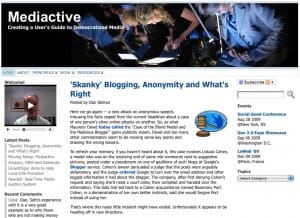
Trying to get users off their asses, to participate? Well, hot-button issues like the "Skank" blogger case are a good way to start...
In a slightly more constructive piece, Dan Gillmor, one of the authors of We the Media, announced that he is launching Mediactive, a site dedicated to getting the audience more involved in the news, but transforming them into “active users” rather than “passive consumers.” The announcement piece is here http://mediactive.com/2009/08/24/moving-along-mediactive/
The Nieman site has a piece up on how the New York Times is monetizing its journalists by offering online courses in the Knowledge Network, to be taught by Times columnists http://www.niemanlab.org/2009/08/newspapers-find-a-new-way-to-monetize-their-journalists/
Two journalists are attempting to sell “kits” that would allow recently laid-off journalists to establish hyper-local news sites http://www.jiltedjournalists.com/News.html The effort is being called Dailytown.com, but the kits don’t seem to offer much beyond what a savvy online journalists could do with a custom WordPress install.

- Interesting experiment – reminds me of WindyCitizen.com.
A couple of French startup web-only news sites called Rue89 and Demotix, are experimenting with multiple unconventional revenue streams,
but agree that “paid content is a dead end” http://onlinejournalismblog.com/2009/03/04/the-future-of-online-journalism-according-to-rue89-and-demotix/
And finally, just for reference, the Columbia Journalism Review sets out the difference in value between a print and an online reader – a print reader generates about $709 a year, while an online reader only generates $46 http://www.cjr.org/the_audit/post_11.php

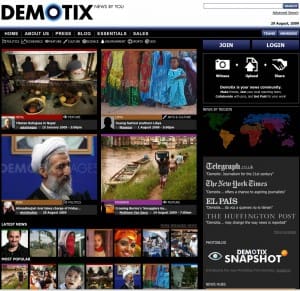
We at Jilted Journalists appreciate the mention and would enjoy hearing what people think of the kit idea — or any idea — not to promote it but to help people find ways to move forward that are right for them. There is a bit of discussion at our associated blog, about how journalists could easily start community/neighborhood/micro news sites on their own; Carll Tucker answers. More discussion is welcome; or did they say enough?
Some people have started their own microsites, we’re planning a follow-story.
If you have found success and are willing to share your experience, we’d like to hear from you to see what we could share with our readers. Thanks.
Thanks for the comment; I’ve worked with a couple of start-up micro-publishers, and am certainly a fan of anything that gets people out of the “woe is us” rut that too many journalists are stuck in, and out into the world, determined to find a way to make doing what we do actually generate revenue.
I’ll be checking in on your site, and joining the discussion there.